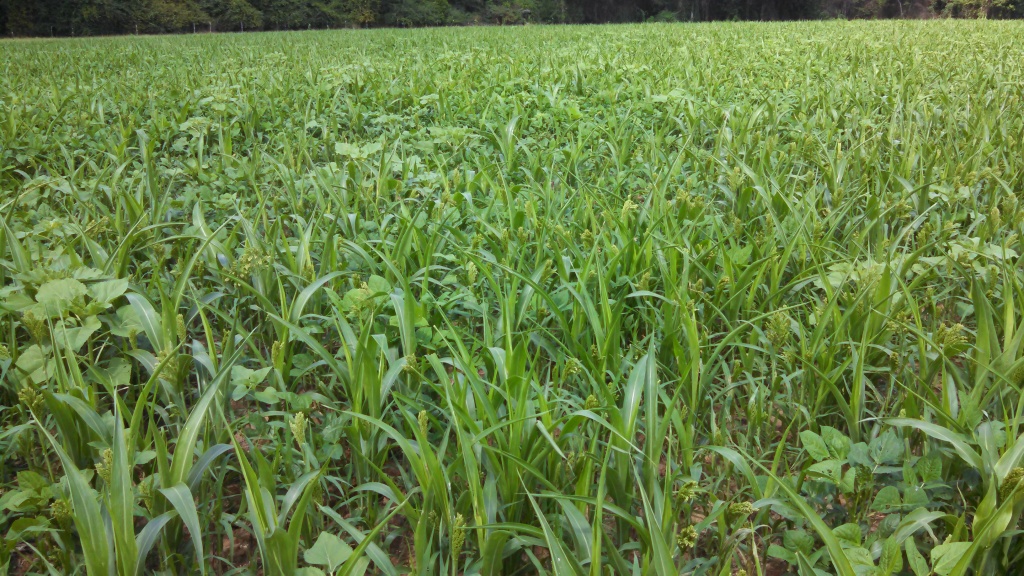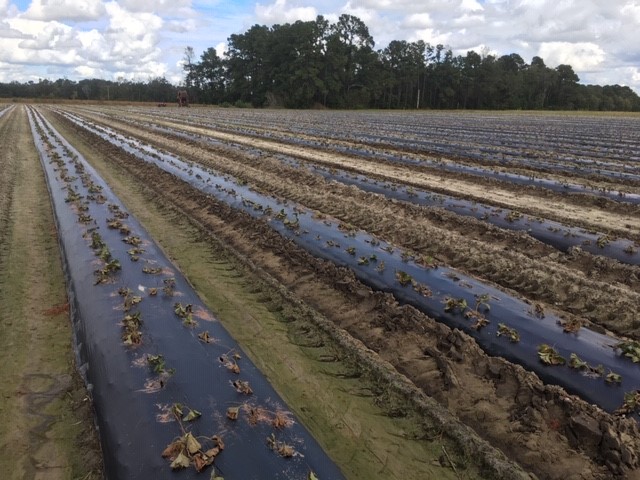Clemson Extension agents provided updates in The South Carolina Grower this week about the status of various crops being produced throughout the state.
Weekly Field Update-10/26/20
Statewide
Dr. Matt Cutulle reports, “A good stand of fall cover crops will typically suppress most weeds. However, you may want to pursue herbicide options for cleaning up the weeds that have pushed through the cover crop canopy. If these cover crops act as buffers in fall vegetable crops, one has to proceed with caution regarding herbicide application. The best selective herbicide option for controlling broadleaf weeds in cereal rye would be a low volatility 2,4D or dicamba product ( the low volatility dicamba products may not be available right now). Enlist One is a 2,4D choline formulation. Apply the herbicide with a hooded sprayer using nozzles that produce coarse droplets. We are approaching cooler temperatures, so the conditions do not favor volatility as much as they did in late spring/summer. If you have a clover cover crop and do not want to kill it, do not spray 2,4D. Using a labeled graminicide (clethodim or sethoxydim products) in clover will provide control of grass weeds that have escaped the clover cover. Remember to read the label and use appropriate surfactants with the graminicides for maximizing activity”

Coastal
Rob Last reports, “Strawberry plants and cut offs are going into the ground in the area. Remember to check roots and crowns before planting and also supervise planting crews to ensure correct depth of planting is achieved. Caterpillar and whitefly on a range of fall crops, pressure remains high in the area so vigilance and regular scouting will be required to spot potential problems.”
Zack Snipes reports, “This past week was all about strawberries. I visited many farms and saw lots of plastic being laid. I checked many strawberry plants from a multitude of nurseries. Overall, the plants look ok this year. I haven’t found any glaringly obvious root or crown rots and very little foliar issues in our plugs and cutoffs. Overall, the plants are on the smaller side, and I hope for a good fall growing season so they can size up a bit before going into the winter. I saw, on a few farms, issues with calibration and equipment for fertilizer distribution. If you need help calibrating or calculating fertilizer rates, please give me a call. I would be more than happy to come give you a hand. I hate to even mention it but I am already seeing deer tracks in strawberry fields…if you need it…”

Midlands
Justin Ballew reports, “Strawberry planting has wrapped up in the midlands and the earliest transplanted fields are already pushing out new leaves. This cooler, damp weather is much better for getting strawberries established than the dry, 95 degree days we saw this time last year. Be sure to go back through the fields shortly after planting to ensure the plants are set at the proper depth. If any were planted too deep or settled too much after the first overheard watering, gently pull them up to the proper depth and refirm the soil around them. This should be done before new roots start to form. Also, get ready for deer! it doesn’t take them long to find newly planted strawberries.”

Pee Dee
Bruce McLean reports, “Strawberry planting is going full pace. Much of the acreage was planted in the last half of last week. The remainder will be planted this week. So far, the transplants look very good. Acreage is up compared to last year. Brassicas are (for the most part) looking good. Insects have not been much of an issue – minimal caterpillar occurrences, occasional aphids, and some grasshopper damage. Some fields have experienced some plant stunting and plant losses due to persistent wet soil conditions (root rot). Die-off really started to show on affected plants with last week’s heat. Some growers will begin harvest next week.”

Upstate
Kerrie Roach reports, “Late season rot issues have sent some apple growers looking for more answers with fungicide resistance testing. Apple pathologist Sara Villani’s lab at the MHCREC in Mills River, NC is conducting tests to look at resistance to specific modes of action(MOA) and fungicides in Apple production. Harvest in apples is about 80% complete with only a few varieties left to pick.”









